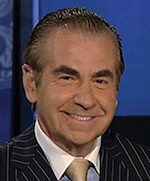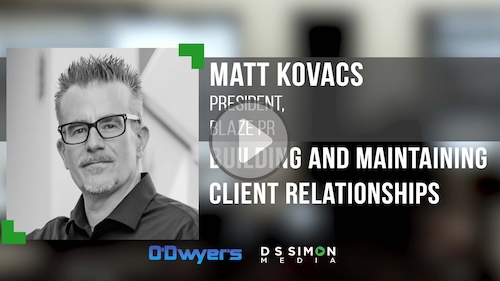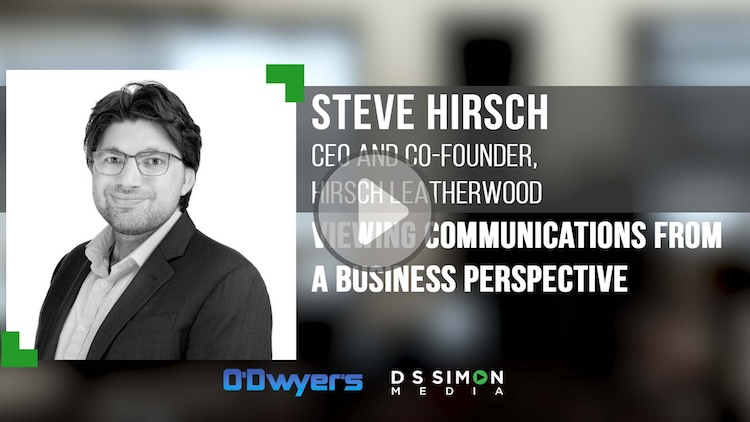 Fraser P. Seitel Fraser P. Seitel |
If you, like most of your fellow compatriots, have been consumed lately by the gripping impeachment drama in Washington (yawn), or the scurrilous accusation that the New England Patriots would actually cheat to win (groan), or the news that back-broken Harvey Weinstein has bribed his way out of prison (phew) … then you probably weren’t paying attention a few weeks ago when a significant, long-awaited court case was decided in New York City.
If so, you’re to be forgiven, because The New York Times also buried the court decision—New York State v. Exxon Mobil—even though that paper had engaged in a five-year, front-page crusade to, well, bury the oil company for its alleged role in perpetuating global warming.
In a day marked by “alternative facts” and “false assertions” and “Pinocchio fact checks” and “fake news,” the fact that dreaded Exxon prevailed despite a tidal wave of relentless negative publicity should be welcome news to any communicator who believes in the power of truth over distortion, bullying and hysteria.
In case you missed it, here’s a brief synopsis of the campaign—not-so-subtly engineered by the formally-objective New York Times—to bring Exxon down.
The Times’ anti-Exxon march began in 2015, when it ran a glowing profile—how many times has that happened? —of Harvard Professor Naomi Oreskes, a prominent climate change advocate and virulent Exxon enemy (although she demurely denies it).
The Times gushed over Prof. Oreskes’ book, “Merchants of Doubt,” which questioned the motives and morals of scientists, such as those at Exxon who played down the dangers of climate change.
Later that year, the Times announced breathlessly that New York’s Attorney General Eric Schneiderman, drawing liberally from Prof. Oreskes’ research, had subpoenaed Exxon to investigate whether the company lied to the public and investors about the risks of climate change. After the uber-ambitious Schneiderman was "#MeTooed" out of his job, his AG successors passionately picked up the anti-Exxon cudgel.
Over the next five years, the Times—a notoriously difficult medium for publicity-seeking public relations representatives to crack—nonetheless dutifully awarded Prof. Oreskes ample space to publish both “research studies” that challenged Exxon’s knowledge of climate change as well as op-ed articles elaborating on why her research was right.
The Times next appointed a full-time climate change reporter, a decent chap named John Schwartz, to focus on Exxon as the ringleader of climate change deniers.
It was Schwartz’s task to remind readers periodically of Exxon’s alleged deceit … first revealing that other state AGs had joined the New York Exxon investigation … then reporting on the “seminal” Oreskes’ research of how Exxon misled the public … and finally announcing on Page One in 2018 that New York State had filed suit against Exxon for defrauding shareholders about the risks of climate change.
Triumphantly, in October 2019, Mr. Schwartz and the Times informed its readers—on the front page—that at long last, “New York Sues Exxon Mobil, Saying it Deceived Shareholders on Climate Change.”
During the trial’s three months, the Times remained in attack mode, periodically allowing Exxon enemies to hyperventilate on the op-ed page, hoping against hope to influence the judge to find the company guilty of sins against humanity.
Typical of the op-ed opprobrium was a hysterical rant by a notorious Exxon hater halfway through the trial that called out the company and its industry for knowing full well that they were the primary culprits for a “planet headed toward a climate catastrophe, but they keep drilling away, trying to squeeze the last nickel from their deadly product.”
The writer concluded by applying a bit of what might graciously be characterized as “good-natured pressure” on the judge in the case by calling him out by name and beseeching him to “determine whether Exxon’s misrepresentations violated New York securities law.”
In the end, of course, as the Times reported in a short piece hidden inside the paper that you likely missed, the judge found in favor of Exxon. Indeed, despite the hysterical rantings of its critics, aided and abetted over the years by The New York Times, the judge concluded that the state “failed to establish by a preponderance of the evidence” that Exxon had done anything wrong.
After the verdict, the company commented that the case affirmed its position from the beginning that it had reported accurately over the years as the science on climate change became more certain and that the whole orchestrated campaign against it was, therefore, baseless.
New York AG Letitia James, on the other hand, wasn’t buying the Exxon blather. “For the first time in history,” she crowed, “Exxon Mobil was compelled to answer publicly for their internal decisions that misled investors.”
And all it cost to find out that the rabble rousers were wrong and the “bad guys” were telling the truth were several million dollars out of taxpayer pockets. Such a deal.
***
Fraser P. Seitel has been a communications consultant, author and teacher for 40 years. He is author of the Pearson text “The Practice of Public Relations,” now in its 13th edition, and co-author of “Rethinking Reputation" and "Idea Wise.” He may be reached directly at [email protected].










 Have a comment? Send it to
Have a comment? Send it to 
No comments have been submitted for this story yet.